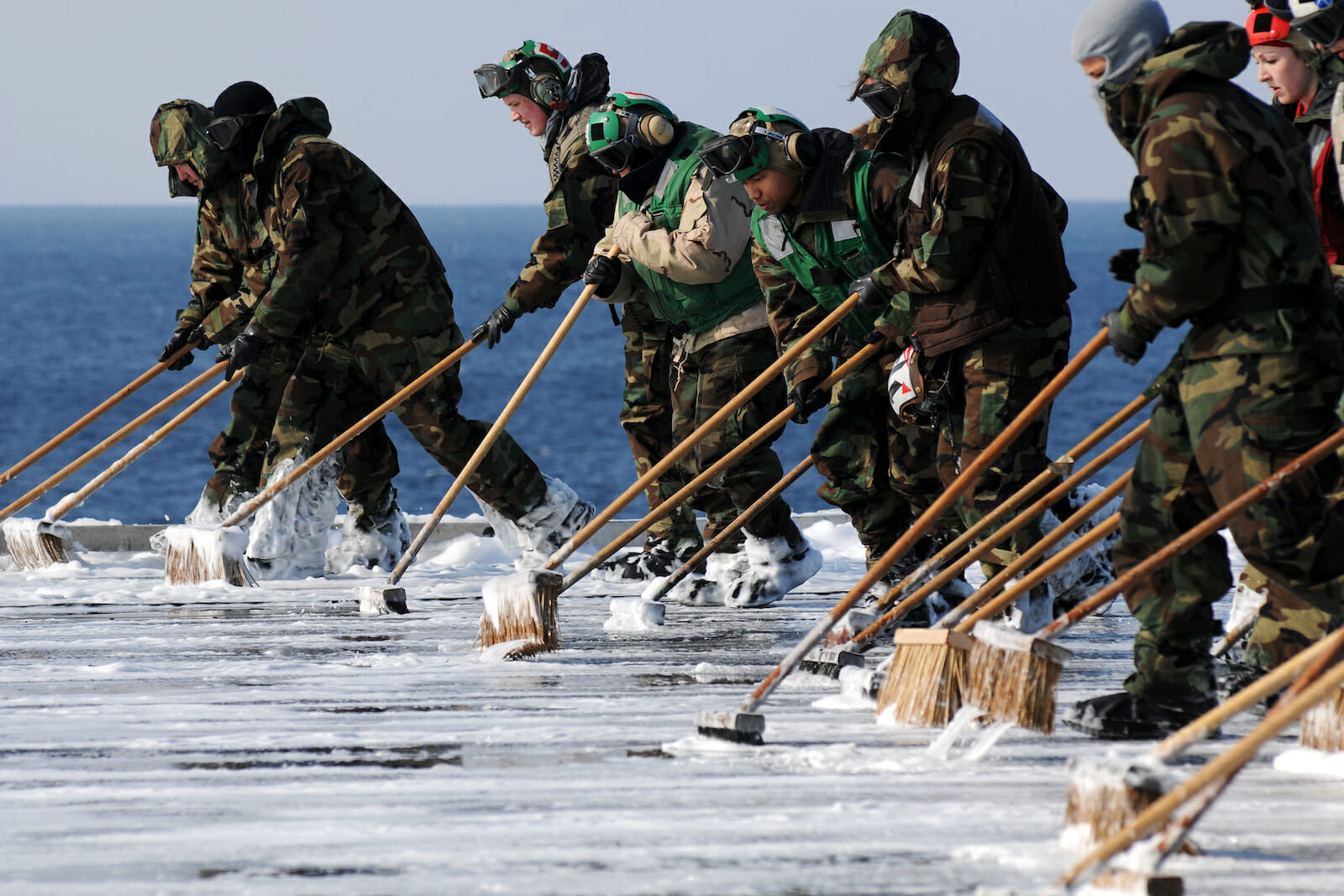
Health
Were U.S. Servicemembers Exposed to Radiation in Japan?
From Radiation – Exposure and its treatment: A modern handbook, “During the Manhattan Project, a squad of infantry soldiers without protection dug foxholes a quarter-mile from one of the Alamogordo bomb tests. When the atom bomb exploded atop its tower, it was so bright a soldier said he saw through his eyelids, through the blood vessels, skin, and muscles of his arm, to the grains of sand on the side of his foxhole. After the blast, the squad marched to ground zero as ordered and disassembled their rifles…The squad reassembled their rifles and marched out through clouds of dust. All of them got serious radiation sickness.”
“All of them recovered, went home and had families. Their children were normal. At 20 years past their exposure they started to die of lymphomas and sarcomas. By 30 years, all of them had died of some type of cancer. Even with a dose that nearly kills you, it takes decades to develop cancer – if you do.”
There are other stories besides the atomic soldier squad. I have a cousin who was highly irradiated with x-rays by accident during gestation. He’s fine. I know the son of a Manhattan Project physicist who was irradiated with neutrons in gestation for the first 4 or 5 years of his life.
His mother even got a mild case of radiation sickness. She died of natural causes, and he is well into his sixties now. But we all know that anecdotes don’t mean a lot when it comes to statistics, so I’ll talk about the science now.
First a note about the units of radiation and what they mean
I will translate everything into Gray and Sievert units because that is what medicine and health physics uses. (Gy = Gray, Sv = Sievert) For gamma rays, 1 Gy of irradiation equals 1 Sv of exposure. The first is primarily used by physicians, for instance when setting radiation therapy doses for cancer patients. The second is used by health physicists. The chart below shows a logarithmic scale of doses.
Now, let’s look at what the doses received on the USS Ronald Reagan could have been
Two peer-reviewed radiation surveys taken during that period indicate what is likely, and an unconfirmed report sounds plausible. The unconfirmed report from the USS Ronald Reagan is 0.6 mRem/hr. That is equal to 6 μGy/hr (0.000006 Gy). That is 6 millionths of a Gray. Then we have a radiation survey from Iitate village that showed a dose rate of 200 μGy/hr. Another radiation survey of Fukushima looking for hotspots showed 4.8 – 98 μGy/hr.
Using the highest figure from Iitate village, which is 200 μGy/hr at 1 meter above the ground on March 28/29, a person standing in the hot spot would get 50 mSv in 250 hours. It is not reasonable to believe doses were significantly higher out to sea.
From this, we see that the unconfirmed report from the USS Ronald Reagan sounds like it is in a reasonable ballpark. In the chart above, you can see the USS Ronald Reagan dose plotted on the chart in red. However, it is not reasonable to believe that Reagan’s crew was exposed to that high dose over the short period of the reported radiation plume.
You see, the USS Ronald Reagan is thick steel that stops gamma rays. Anyone below deck would not be exposed to external radiation. A crewman would have to be on-deck 16 hours a day out in the open to have a shot at hitting that level. A man inside a helicopter would mostly be shielded.
A man inside an aircraft would mostly be shielded. But even so, that is a level of radiation exposure that is not associated with anything close to radiation injury or cancer.
The vessel was scrubbed clean. The instruments and crew on board a nuclear-powered vessel are quite capable of determining what the level of radioactivity is on board the ship. After all, inside a nuclear vessel is a nuclear reactor that has a lot more radioactivity inside than any amount of Fukushima fallout from outside.
Chernobyl was a much worse accident than Fukushima. We have learned what happened from that. The Linear No Threshold (LNT) model which was used to estimate 4,000 cancer deaths from Chernobyl and order the evacuation has simply not turned out to be true. After 25 years, the data is in. According to “Observations on the Chernobyl Disaster and LNT,” by Zbigniew Jaworowski:
The projections of thousands of late cancer deaths based on LNT, are in conflict with observations that in comparison with general population of Russia, a 15% to 30% deficit of solid cancer mortality was found among the Russian emergency workers, and a 5% deficit solid cancer incidence among the population of most contaminated areas.
No harmful health effects have ever been detected in high natural radiation background areas. This is consistent with other studies of the incidence of cancers in exposed populations. In the United States and in China, for example, the incidence of cancers was found to be lower in regions with high natural radiation than in regions with low natural radiation.
British radiologists exposed mainly to x-rays the all causes and cancer mortality is lower by about 50% than that in the average male population of England and Wales.
…except for thyroid cancers in the population of highly contaminated areas, no increase in the incidence of solid tumors and leukemia, and no increase in genetic diseases was observed.
Thyroid cancer appeared after Chernobyl, but in far lower numbers than lay people believe. If you were one of the exposed children of Chernobyl, your odds of getting thyroid cancer could be as high as 10 in 10,000. (Tronko, et al. 2006, Ron, 2007) Your odds of getting struck by lightning in your lifetime are 3.33 in 10,000. So roughly speaking, if you were one of the children highly exposed to I-131, your odds of getting thyroid cancer would be three, maybe four times your chance of getting struck by lightning. That chance of getting thyroid cancer is lower than your chance of dying in most ways, from riding in a car to crossing the street.
The radionuclide that can lead to thyroid cancer, I-131 has an 8-day half-life. It doesn’t stick around very long. No adult received a serious dose of I-131 as a result of Chernobyl because adults aren’t absorbing iodine like mad the way children are. Those thyroid cancers that showed up after Chernobyl took a while. If the USS Ronald Reagan had been hit with a heavy dose of fallout, (and by heavy, I mean 1 or 2 Gy per day) we would expect to see some cancer showing up in 10-20 years, but not now.
But we have a lawsuit filed just a couple of years later claiming radiation injury and cancer by over 50 crewmen. The full crew of the USS Reagan is 5,680 people. That’s enough that there are likely to be some cancers. I don’t have a full listing. I’ve made a few approaches to try to find out what exactly the evidence is, but I haven’t been able to see it. I believe that there probably are members of the USS Ronald Reagan crew who may sincerely believe they were harmed. But belief is not reality. Much reporting on Fukushima has been rabid nonsense, or wild fantasy without any basis.
The proposition that the USS Reagan crew were contaminated with significant doses of radiation is not credible. Suggestions that the US Navy is somehow hiding something because the ship was not brought back to a US port are equally so. The idea that the crew of the ship are suffering radiation-related injury or cancer caused by the Fukushima fallout is fantasy. It is just not possible based on what science knows.

